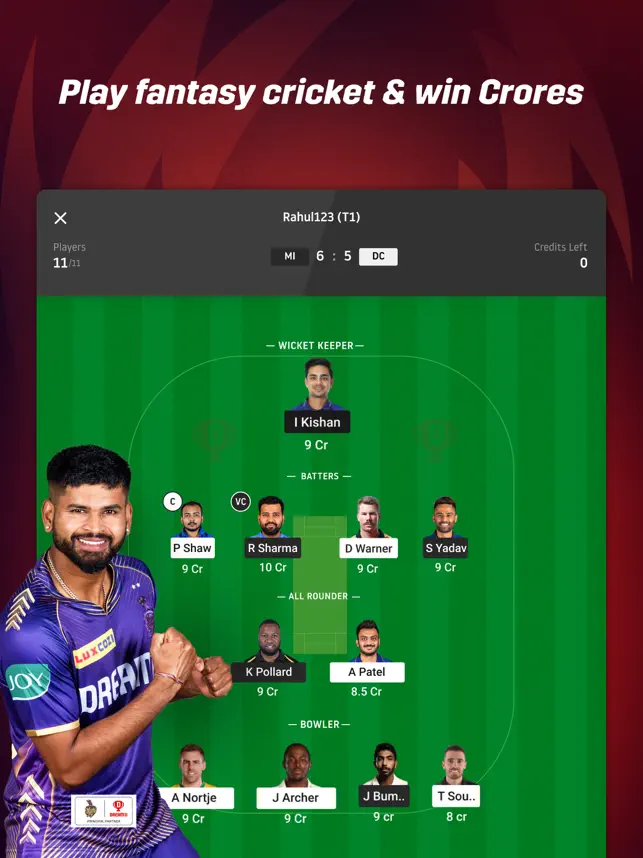One of the most important roles of the IT team is monitoring incoming alerts and managing Incident response efficiently. By doing so effectively, organizations are protected from incoming security threats, as well as from internal issues such as system outages.
A successful incident management strategy starts with tools and processes that streamline operations and improve collaboration and communication. Team members can focus more of their time on what matters by taking a better approach to monitoring and incident response.
Implementing these best practices can help streamline your incident response process. Let’s dive into the 10 ways in how IT monitoring and alerting speeds up incident response.
1. Define your monitoring & alerting strategy
In some instances, teams lack insight into performance, while others are swamped with notifications, thus more likely to overlook the underlying causes of problems. Either scenario may lead to incidents becoming serious emergencies and customers experiencing IT downtime.
It’s important to establish the right monitoring mix to prevent false positives and negatives chaos around incident response. Your monitoring and alerting strategy must include, setting up appropriate alerts and thresholds, sending alerts to the right people, and organizing alerts based on priority, getting insights into all aspects of the business operations.
2. Automate Incident Analysis
Automation of the monitoring and alerting process can streamline your incident response plan. An automated incident response system should help interpret, contextualize, and define the priority of each alert based on analysis.
Automating incident response can save a great deal of time as it eliminates the need for your team to look up contextual information. Engineers can eliminate the time wasted interpreting relationships between different incidents so that they can respond faster. It also makes it easier to correlate multiple incidents from the root cause.
3. Create Multiple alerting channels
Email is often used as the channel of choice when it comes to alerts, but it does not always work. SMS, mobile push notifications, or voice calls may be necessary to send urgent alerts. It’s important to find a system that offers a variety of alerting options across multiple channels to reach the incident response team.
4. Focus on Root Causes
The core focus of your incident response strategy should be identifying and resolving root-cause problems. However, incident response can be challenging when you are constantly being distracted by other fires during your operations.
You should resist this temptation and look for the root causes of the problem, even if you have to let some fires burn longer than you would prefer. The longer you prioritize root causes, the faster the incident response will be.
The key to addressing the root cause is obvious: reducing incident frequency will add to the effort involved in determining which incidents are the result of the same cause. It is easier to respond to incidents with fewer issues to manage.
5. Predefine Incident Response Playbooks
It is not feasible to reinvent the wheel for each incident when establishing a streamlined monitoring and response protocol. This causes undue stress to on-call team members and wastes time. This is where Playbooks come into play.
It is impossible to write a playbook that anticipates every possible incident response scenario with perfect accuracy. Some teams dismiss playbooks for this reason. However, even if your playbooks don’t exactly match the incident you’re facing, they can still save you a lot of time because they eliminate the need to create the response from scratch.
Although the tooling for analysis and response may require some adjustment, the core processes for getting the server up and running should remain the same. It is better to have a playbook that guides the overall process, even if some steps require ad hoc adjustments than to not have one.
6. Define Incident Response Roles
Most organizations designate on-call engineers for each shift to handle incidents. When they can’t handle an incident on their own, it’s up to them to decide who else to involve. It’s a simple strategy, but it rarely results in the fastest response time.
Ideally, incident response roles should be coordinated with incidents’ types. Rather than relying on a manual procedure for bringing the right expert into each response, you can assign incidents to someone who can resolve them from the start.
7. Communicate in Real-Time
One of the best practices to speed up the incident response is to communicate with your team in real-time. Real-time communication is probably something you already recognize. Most teams, however, make the mistake of using communication strategies that are close to real-time, but not quite there.
There is a need for organizations to go beyond the ticketing system to coordinate their responses. An integrated system aligned with your communication plan will allow your team to receive alerts and notifications automatically and instantly.
8. Make alerts actionable
Alert fatigue is one of the major issues among incident response teams. Knowing what’s wrong is important, but knowing what to do next is even better. That’s why you need actionable alerts in place. By integrating an actionable checklist into your alert system, you can reduce diagnostic time and help your incident response team move quickly through your process.
9. The culture of reliability
The company is responsible for protecting the customer experience and making sure the product meets expectations. Each engineer plays a role in preventing reliability problems. It is important to develop a culture of reliability, encouraging employees to be proactive and take actions that align with the business’s objectives and customer needs.
Improve the performance, functionality, and dependability of a product by setting concrete criteria and goals. Analyze best practices to assess the health of your platform and services based on externally measurable outcomes.
10. Manage threats quickly
Give your team the authority to start with the most important tasks. Drive results through collaboration and automation. When teams are not concerned with handling smaller, superfluous incidents, they are better able to respond quickly to important tasks with a greater level of detail and care.
The challenges and expectations of each team are unique. With this in mind, it is essential to consider how efficiently your system operates and how effectively your incident management can maintain the reliability of your service or product.
Using key metrics to track and monitor your team’s performance can reveal issues and weaknesses that need to be addressed to continually improve incident management maturity. This will help you do effective IT monitoring and speed up alerting during incident response. Alongside implement additional strategies such as predefined playbooks, intelligent role assignment in incident response processes, and automated incident analysis.
If you’re looking for more information on how to monitor the KPI’s for your IT incident management and accelerate your alerting system, please do not hesitate to talk to us and get a demo.
My name is Sardar Ayaz a professional content writer and SEO expert having Proven record of excellent writing demonstrated in a professional portfolio Impeccable grasp of the English language, including idioms and current trends in slang and expressions. I have ability to work independently with little or no daily supervision with strong interpersonal skills and willingness to communicate with clients, colleagues, and management.
I can produce well-researched content for publication online and in print, organize writing schedules to complete drafts of content or finished projects within deadlines. I have 12 years’ experience to develop related content for multiple platforms, such as websites, email marketing, product descriptions, videos, and blogs.
I use search engine optimization (SEO) strategies in writing to maximize the online visibility of a website in search results











